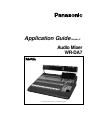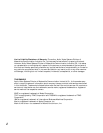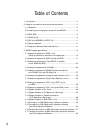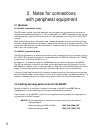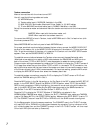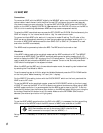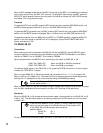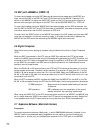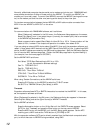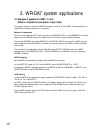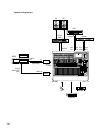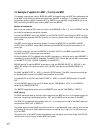
5
2. Notes for connections
with peripheral equipment
2.1 Wordclock
The WR-DA7 as wordclock master
The DA7 has an internal wordclock generator that provides a timing reference for the external
(digital) audio devices connected to it. This is neither MIDI nor SMPTE timecode. You can set the
internal generator to synchronize to either 44.1 or 48K, selectable from The [D-I/O>INPUT SET]
window.
When multiple digital audio devices are used, it becomes necessary to synchronize the audio sig-
nals with a single reference timing signal or master wordclock source. In a system where all of the
digital audio devices share a common wordclock it is essential that all of the devices be turned on
even if they are not being used.
The WR-DA7 as wordclock slave
The DA7 can be slaved to an external wordclock source, to accomplish this you must go to the [D-
I/O>INPUT SET] window. Here you can choose Wordclock In [WCK IN], Video Sync In [V SYNC],
2 track A input [2TR IN A] and Slot 1,2 or 3.
For example: it is possible to select the WR-AESS card as the wordclock source of the WR-DA7.
The DA7 can be synchronized with the digital audio signals being input on Channels 1/2 of the
WR-AESS card. However, when no input is present on Channels 1/2 an UNLOCK status will be dis-
played. The wordclock synchronization with the other channels will not be realized either.
If the word clock is set incorrectly (for example, a system where multiple equipment units are set
as the wordclock master), noise (usually in the form of clicks and pops) may become audible. It is,
therefore, necessary that all of the slave units be synchronized with the wordclock master unit.
2.2 Installing and using option cards with the WR-DA7:
Be sure to install all of the Option Cards with the power of the DA7 turned OFF. Set the
Dipswitches on the card accordingly for the type of devices being connected.
Insert the card into the WR-DA7. Install all of the supplied mounting screws (for proper ground-
ing) securely to the DA7’s chassis.
WR-TDIF: Set the dipswitches, or switches on the card, according to the devices
being connected.
When connecting a DA-38 or DA-98 (SW1) ON, (SW2) OFF
When connecting a DA-88 (SW1) OFF, (SW2) OFF



